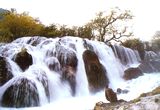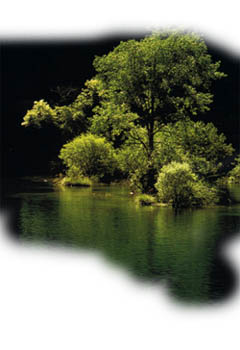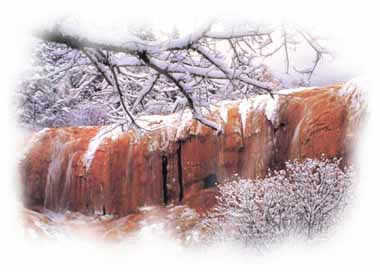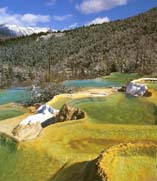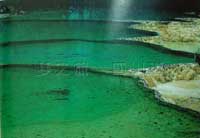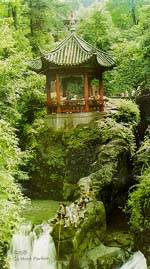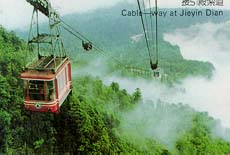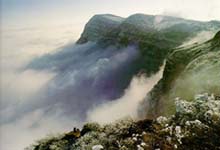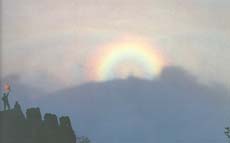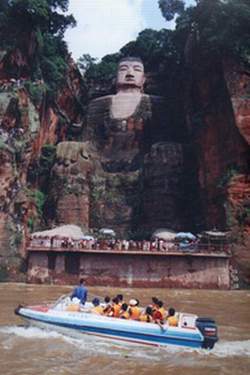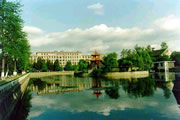|
|||||
|
Jiu Zhai Gou |
|||||
|
Jiu_Zhai_Gou UNESCO world heritage list 1992 Location: West of Chengdu,one hour fly by whirlybird There are six scenic spots: Changhai, Jianyan, Nuorilang, Shuzheng, Zharu and Heihai. The area is well known both at home and abroad for its natural
scenery which includes snowy peaks, double waterfalls, colorful forests
and green sea. Tibetan customs are another attraction.
In 1992 it was listed
as a world heritage site. |
||||
|
Huanglong (Yellow Dragon) UNESCO world heritage list in 1992. Location: (very near to Jiu_zhai_gou) There are two parts to the Huanglong Scenic Area in Songpan County, Sichuan Province-Huanglong and Maonigou. The special character of the area, which extends over 700 square kilometers results from formations of talpatate, which give a special color to ponds and beaches. With a background of high mountains, snow covered peaks, valleys, waterfalls, lakes and forests, these talpatate scenes are quite spectacular. The scenic area provides a variety of unique and wild scenery such as the Huanglong (Yellow Dragon) Ravine, at the foot of the Xuebao Peak in the Minshan Mountain; it is 3.6 kilometers long and 30-170 meters wide. The section from the Fuyuan Bridge at the entrance to the Yuyu Pond is 3,160-3,574 meters above sea level and its surface is a thick layer of light yellow talpatate. In the sunshine, the ravine looks like a golden dragon winding its way through the forest. In the ravine there are a variety of talpatate scenes, talpatate ponds, beaches, waterfalls, caves and dykes but the colorful talpatate ponds are the most attractive; they come in different shapes, sizes and colors and there are 3,400 of them in eight groups. Huanglong Scenic Area is an important scenic spot and was listed as a world heritage site in 1992. Included in the UNESCO world heritage list in 1992. |
||||||||||
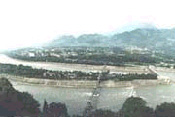 |
Du_jiang_yan
irrigation System in the list of world heritage Location: west of Chengdu.one hour drive During the Warring States Period in 256 BC, the governor of the Shu Prefecture Li Bing and his son led the people to build the large water conservancy works to control flooding on the Chengdu plains. Up to now, 2,250 years have passed, and the works still play a significant role in agriculture on the Chengdu plains. It is a historical wonder of science and technology. |
||||||||||
|
Emei Mountain Location : 80 minutes for drive, UNESCO world heritage list
Giant Buddha at Lesan
|
||||||||||
|
Sichuan Univesity Location : center area of Chengdu Sichuan University, the former Sichuan Zhong Xi Xue Tang of the Qing Dynasty, opened in June 18, 1896 . In the course of over 100 years, Sichuan University has built up a glorious revolutionary tradition, laid a solid foundation for education and developed a unique school style of learning as seek truth with creative work. Current Sichuan University is the largest comprehensive university with the most extensive disciplines in Southwest China. Currently. sichuan university has about 60,000 students (including Graduate Students Full-time Study Students ,Undergraduate students, Specialized Students,Continuing Education and Foreign Students) Sichuan University is situated in Chengdu, a cultural and historic city and the Land of Abundance, The university occupies an area of 250 hectares with a total floor space of 1.8 million square meters, and a newly-added area of 167 hectares. |
||||||||||
|
|
|||||||||||

